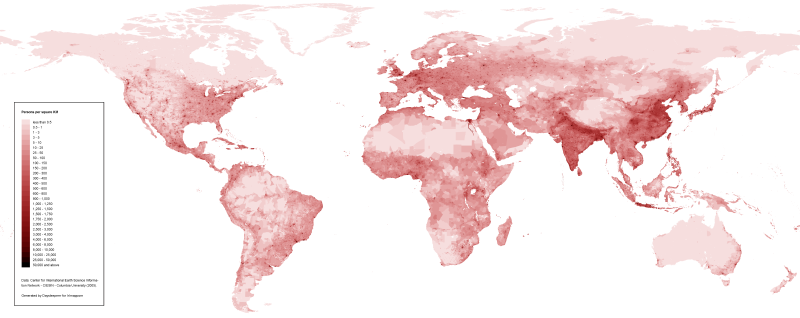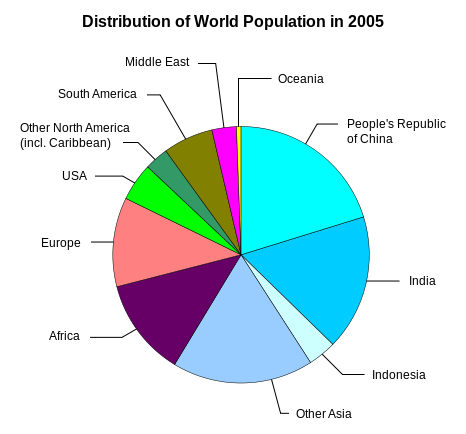How Does Population Density Differ From Population Size
The main deviation betwixt population density and population distribution is that the population density is the number of individuals per unit land whereas the population distribution is the spreading of people over an area of land. Furthermore, population density is unable to describe where the population really lives, unlike population distribution.
Population density and population distribution are 2 measurements of population used in a variety of applications in ecology.
Key Areas Covered
ane. What is Population Density
– Definition, Features, Examples
ii. What is Population Distribution
– Definition, Features, Examples
3. What are the Similarities Between Population Density and Population Distribution
– Outline of Mutual Features
4. What is the Difference Between Population Density and Population Distribution
– Comparison of Central Differences
Central Terms
Advantages, Disadvantages, Population Density, Population Distribution

What is Population Density
Population density is the number of individuals that alive in a unit area in a specified time. Every bit an example, the population density of China is 144 people per square km in 2012. The density of the population of a particular area is determined by the geographical features such as the shape and the height of the land, bachelor resources, climate, etc.

Effigy 1: World Homo Population Density Map
When information technology comes to the man population, these factors tin exist economic, social, and political. Populations with high density can accept some advantages:
- Strong economic system
- People tin have more opportunities
- Easy admission to resources
Populations with less density have their own disadvantages too:
- Population starts to subtract due to the less number of individuals in it.
- Predators can easily catch individuals.
What is Population Distribution
A distributed population has several advantages over dense population to a certain extent. As an instance, the natural conditions of Mainland china leads to the unevenly distributed population.

Effigy 2: World Population Distribution
An evenly distributed population has its ain benefits. Some of them are described below:
- Each individual can occupy a sufficient area for living.
- They have more than privacy; less peer pressure.
- They tin can use renewable energy sources.
- They tin can live in a cleaner surroundings.
- They are far away from danger.
The less distributed population has its disadvantages as described below:
- Spread of diseases is high in dense areas.
- Air, water, and land pollution go increased.
- Nutrient sources go less arable.
Similarities Between Population Density and Population Distribution
- Population density and population distribution are ii measurements of population used in environmental.
- A specific fourth dimension period and a geological location have to be mentioned while describing both parameters.
Difference Between Population Density and Population Distribution
Definition
Population density refers to a measure of the number of organisms that make up a population in a defined area while population distribution refers to the arrangement of the population on a sure expanse in accordance with weather and requirements of the gild. This explains the difference between population density and population distribution.
Significance
Population density describes the number of individuals in a particular population inside a unit of measurement area of land while population distribution describes the variability of the spread of the population in a particular area.
Examples
Equally an example, the population density of Canada is 4 people per square km in 2012 while 86.2% of people in Canada lived in Ontario, BC, Quebec, and Alberta at the outset of 2013.
Conclusion
Population density is the number of individuals in a unit of measurement area of state under a divers time menstruation. Only, population distribution is the concentration of individuals in a particular area. The main difference between population density and population distribution is the type of parameters described by each measurement.
Reference:
one. "Population Size, Density, & Dispersal."Khan Academy, Khan Academy, Available Here
Image Courtesy:
1. "World man population density map" (CC0) via Commons Wikimedia
2. "Earth population distribution" Past The original uploader was Urocyon at English language Wikipedia. – Transferred from en.wikipedia to Commons by Undead_warrior. (CC Past-SA 3.0) via Commons Wikimedia

How Does Population Density Differ From Population Size,
Source: https://pediaa.com/difference-between-population-density-and-population-distribution/
Posted by: saunderscriver.blogspot.com


0 Response to "How Does Population Density Differ From Population Size"
Post a Comment